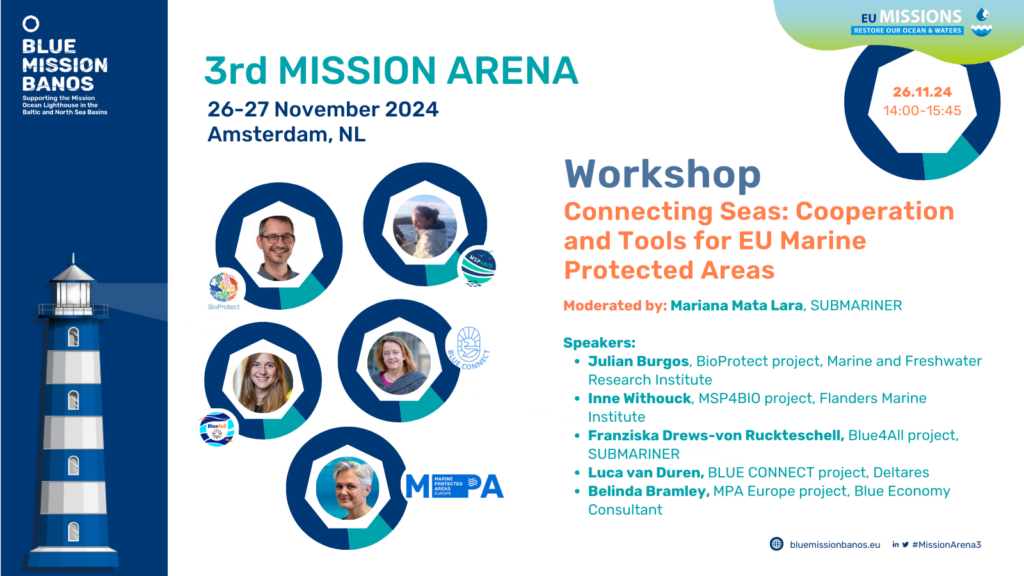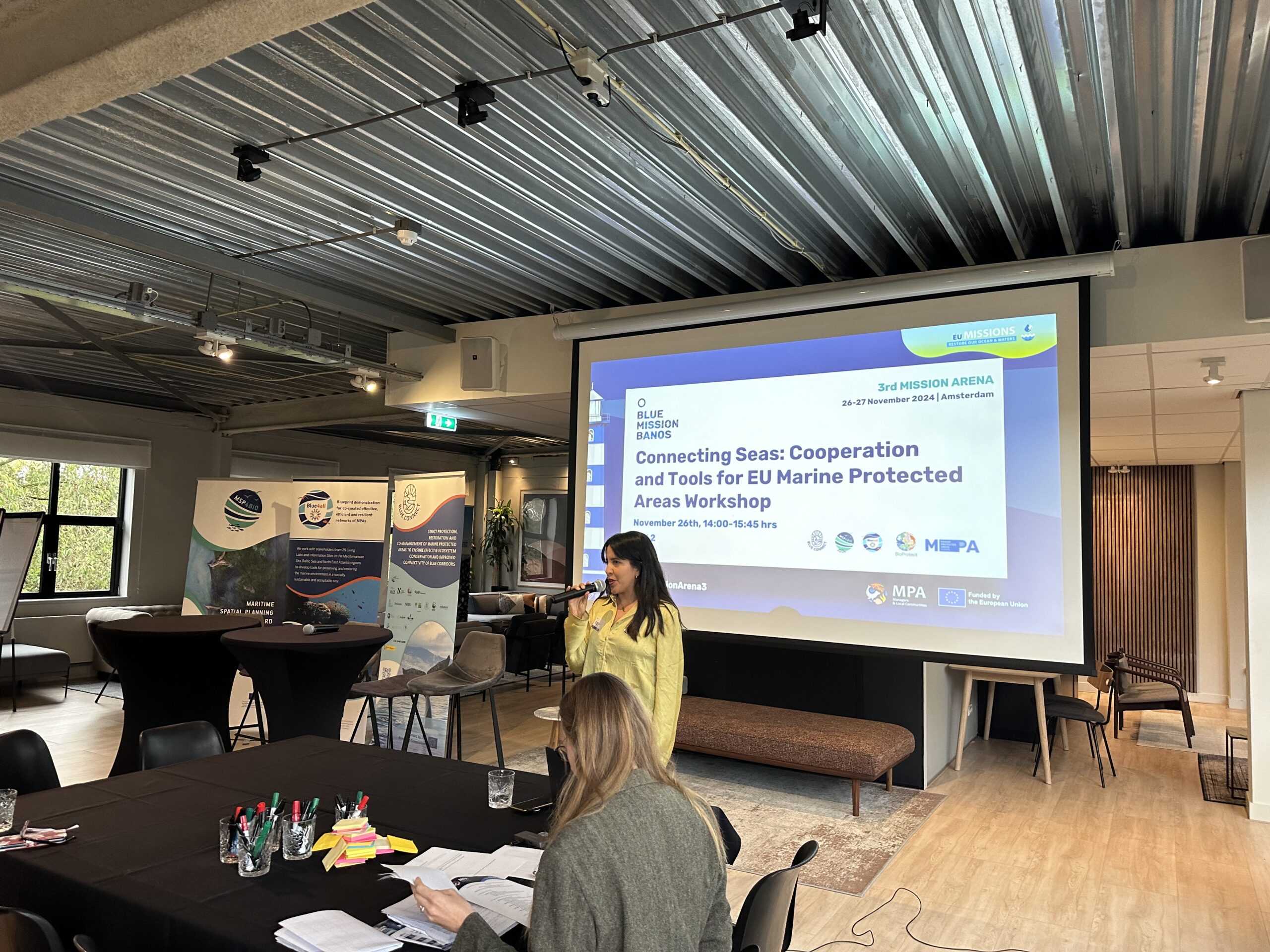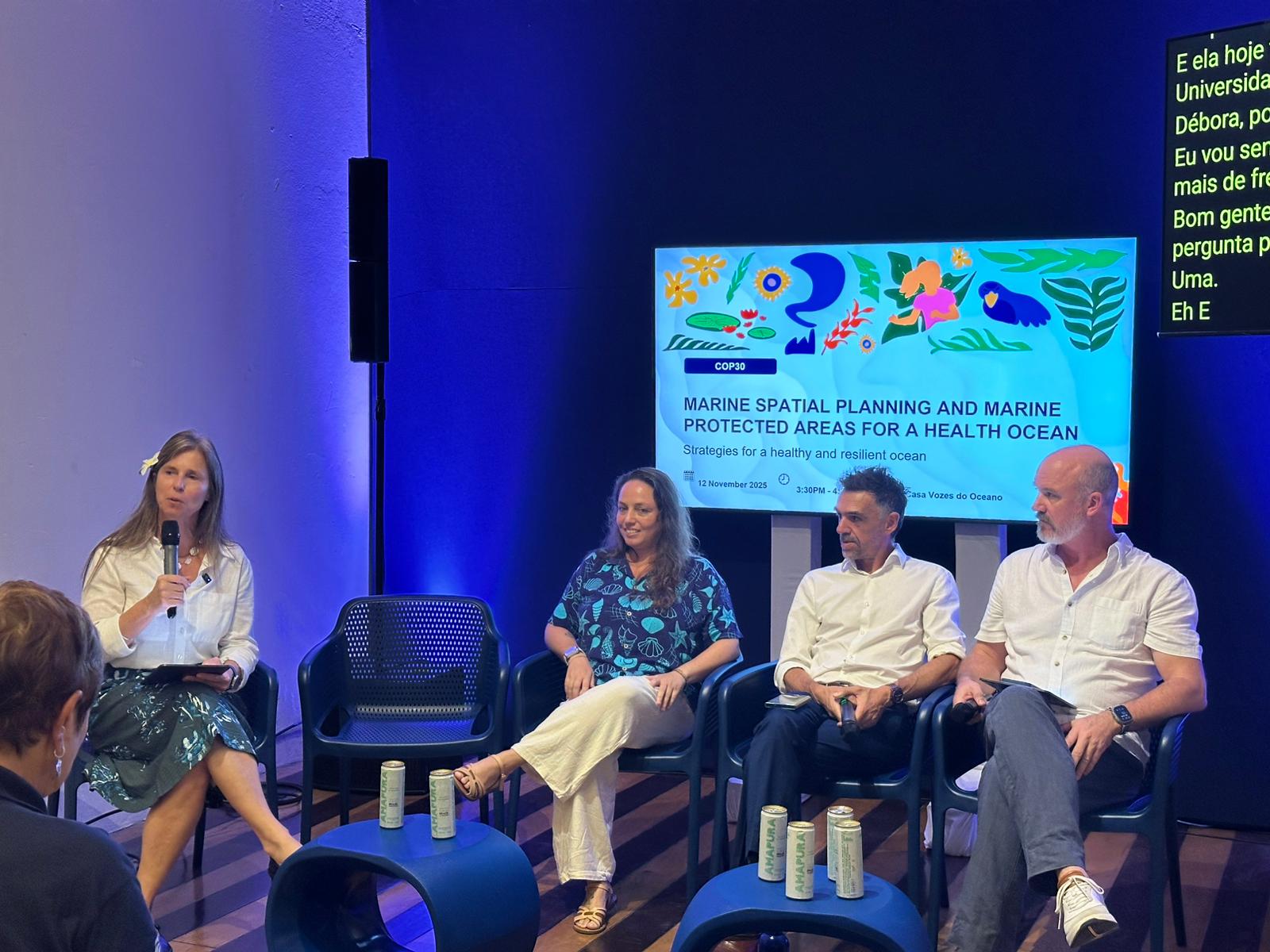
On November 26th, 2024, during the 3rd Mission Arena in Amsterdam, the panel session “Connecting Seas: Cooperation and Tools for EU Marine Protected Areas (MPAs)” brought together leading voices from EU-funded projects to address critical challenges and opportunities in marine conservation. This session united representatives from BioProtect, BLUE4ALL, MSP4BIO, Blue Connect, and MPA Europe. Each project showcased the tools and methodologies they are designing to safeguard marine biodiversity while fostering sustainable governance and stakeholder collaboration in Marine Protected Areas across Europe.
Bridging Projects with Shared Goals
The primary objective of the session was to pinpoint synergies between projects and foster collaboration to consolidate tools that enhance MPA management across Europe. These tools range from cutting-edge biodiversity monitoring technologies to frameworks for ecological connectivity and strategic spatial planning. By sharing insights and best practices, participants explored opportunities for joint data-sharing initiatives, unified stakeholder engagement strategies, and coordinated knowledge transfer.
Innovative Tools and Demonstration Sites
Each project presented an array of tools and pilot applications:
- BioProtect introduced its Marine Planner, a tool that will allow users to visualise the cumulative impacts and pressures from human activities in the marine environment but also to identify potential priority areas for conservation measures, such as establishing marine reserves or other effective area-based conservation strategies. Its five demonstration sites span the North Atlantic, showcasing adaptive measures for ecological preservation.
- BLUE4ALL emphasised its Blueprint Platform, a user-centric solution combining governance, socio-economic, and ecological tools to support resilient MPA networks. This bottom-up approach integrates stakeholder input with regulatory alignment across 25 case studies.
- MSP4BIO highlighted its Ecological-Socio-Economic Framework, offering a comprehensive toolkit for strategic marine spatial planning (MSP) tailored to biodiversity and socio-economic needs across six pilot sites.
- Blue Connect detailed tools for ecological corridor identification, conservation effectiveness monitoring, and innovative stakeholder collaboration methods to meet ambitious EU restoration targets.
- MPA Europe showcased its marine ecosystem classifications and climate projection models, providing planners with standardized, data-driven approaches to marine spatial planning.
Collaborative Action Points
The session underscored the importance of breaking down silos between projects to enhance MPA effectiveness. Key action points included:
- Enhanced Prioritization Frameworks: Develop criteria to identify areas most in need of MPAs, integrating ecological, social, and economic considerations. Focus on creating localized networks informed by broader biodiversity and socio-economic analyses.
- Strategic Protection and Decision-Making: Establish high-level frameworks to pinpoint critical areas for strict protection and support evidence-based policy and planning.
- Data Accessibility and Knowledge Sharing: Build an open-access repository to ensure project outputs are sustainable, reusable, and accessible for future conservation efforts.
- Blue Corridors and Ecosystem Connectivity: Assess and promote blue corridors based on robust scientific evidence, demonstrating their benefits for species protection, extinction prevention, and ecosystem productivity.
- Adapting to Emerging Challenges: Evaluate how wind farms and other marine infrastructure influence marine landscapes, incorporating findings into conservation and restoration strategies, particularly under climate change scenarios.
- Policy Integration and Regional Planning: Ensure project findings reach policymakers within a four-year timeframe, focusing on regional coordination over national silos to align conservation efforts with decision-making processes.
- Improving Governance and Management: Reassess political and operational frameworks governing MPAs to enhance their effectiveness. Address gaps in staffing and resources to support robust management practices.
- Scaling Monitoring Efforts: Expand ecological and user-impact monitoring to provide comprehensive oversight across all sites, ensuring adaptive and informed management.
- Leveraging Insights and Collaboration: Consolidate insights and case studies from projects, including deep-sea pilots, to enhance cross-project coordination and leverage collective knowledge through the Mission Implementation Plan (MIP)
Moving Forward
The “Connecting Seas” session demonstrated the collective power of EU-funded projects to address marine conservation challenges and it is the first step towards a more long-term collaboration among these projects. One important way of doing so is by them becoming part of the MPA managers and Local Communities group, an initiative focusing on compiling the outputs of those projects working with MPAs in one place, and offering a place to network with other stakeholders from the conservation world and other sectors of the blue economy.
The details on the session and its outcomes will come out soon at the Blue Mission BANOS websites, including the roadmap for the region.
You can also access the presentation of the session here:



